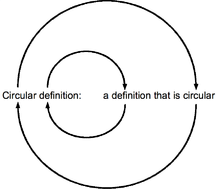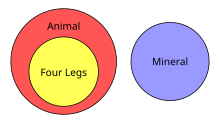
A dictionary is a listing of lexemes from the lexicon of one or more specific languages, often arranged alphabetically, which may include information on definitions, usage, etymologies, pronunciations, translation, etc. It is a lexicographical reference that shows inter-relationships among the data.
Lexicography is the study of lexicons and the art of compiling dictionaries. It is divided into two separate academic disciplines:
A lexeme is a unit of lexical meaning that underlies a set of words that are related through inflection. It is a basic abstract unit of meaning, a unit of morphological analysis in linguistics that roughly corresponds to a set of forms taken by a single root word. For example, in the English language, run, runs, ran and running are forms of the same lexeme, which can be represented as RUN.
Lexicology is the branch of linguistics that analyzes the lexicon of a specific language. A word is the smallest meaningful unit of a language that can stand on its own, and is made up of small components called morphemes and even smaller elements known as phonemes, or distinguishing sounds. Lexicology examines every feature of a word – including formation, spelling, origin, usage, and definition.

A synonym is a word, morpheme, or phrase that means precisely or nearly the same as another word, morpheme, or phrase in a given language. For example, in the English language, the words begin, start, commence, and initiate are all synonyms of one another: they are synonymous. The standard test for synonymy is substitution: one form can be replaced by another in a sentence without changing its meaning.
International scientific vocabulary (ISV) comprises scientific and specialized words whose language of origin may or may not be certain, but which are in current use in several modern languages.
Webster's Dictionary is any of the US English language dictionaries edited in the early 19th century by Noah Webster (1758–1843), a US lexicographer, as well as numerous related or unrelated dictionaries that have adopted the Webster's name in his honor. "Webster's" has since become a genericized trademark in the United States for US English dictionaries, and is widely used in dictionary titles.
A defining vocabulary is a list of words used by lexicographers to write dictionary definitions. The underlying principle goes back to Samuel Johnson's notion that words should be defined using 'terms less abstruse than that which is to be explained', and a defining vocabulary provides the lexicographer with a restricted list of high-frequency words which can be used for producing simple definitions of any word in the dictionary.
The following outline is provided as an overview of and topical guide to criminal justice:
A monolingual learner's dictionary (MLD) is designed to meet the reference needs of people learning a foreign language. MLDs are based on the premise that language-learners should progress from a bilingual dictionary to a monolingual one as they become more proficient in their target language, but that general-purpose dictionaries are inappropriate for their needs. Dictionaries for learners include information on grammar, usage, common errors, collocation, and pragmatics, which is largely missing from standard dictionaries, because native speakers tend to know these aspects of language intuitively. And while the definitions in standard dictionaries are often written in difficult language, those in an MLD use a simple and accessible defining vocabulary.

Merriam-Webster, Incorporated is an American company that publishes reference books and is mostly known for its dictionaries. It is the oldest dictionary publisher in the United States.
Platonic love is a type of love in which sexual desire or romantic features are nonexistent or have been suppressed, sublimated, or purgated, but it means more than simple friendship.
Terminology is a group of specialized words and respective meanings in a particular field, and also the study of such terms and their use; the latter meaning is also known as terminology science. A term is a word, compound word, or multi-word expression that in specific contexts is given specific meanings—these may deviate from the meanings the same words have in other contexts and in everyday language. Terminology is a discipline that studies, among other things, the development of such terms and their interrelationships within a specialized domain. Terminology differs from lexicography, as it involves the study of concepts, conceptual systems and their labels (terms), whereas lexicography studies words and their meanings.

A law dictionary is a dictionary that is designed and compiled to give information about terms used in the field of law.
In morphology and lexicography, a lemma is the canonical form, dictionary form, or citation form of a set of word forms. In English, for example, break, breaks, broke, broken and breaking are forms of the same lexeme, with break as the lemma by which they are indexed. Lexeme, in this context, refers to the set of all the inflected or alternating forms in the paradigm of a single word, and lemma refers to the particular form that is chosen by convention to represent the lexeme. Lemmas have special significance in highly inflected languages such as Arabic, Turkish, and Russian. The process of determining the lemma for a given lexeme is called lemmatisation. The lemma can be viewed as the chief of the principal parts, although lemmatisation is at least partly arbitrary.

A bilingual dictionary or translation dictionary is a specialized dictionary used to translate words or phrases from one language to another. Bilingual dictionaries can be unidirectional, meaning that they list the meanings of words of one language in another, or can be bidirectional, allowing translation to and from both languages. Bidirectional bilingual dictionaries usually consist of two sections, each listing words and phrases of one language alphabetically along with their translation. In addition to the translation, a bilingual dictionary usually indicates the part of speech, gender, verb type, declension model and other grammatical clues to help a non-native speaker use the word. Other features sometimes present in bilingual dictionaries are lists of phrases, usage and style guides, verb tables, maps and grammar references. In contrast to the bilingual dictionary, a monolingual dictionary defines words and phrases instead of translating them.
Computational lexicology is a branch of computational linguistics, which is concerned with the use of computers in the study of lexicon. It has been more narrowly described by some scholars as the use of computers in the study of machine-readable dictionaries. It is distinguished from computational lexicography, which more properly would be the use of computers in the construction of dictionaries, though some researchers have used computational lexicography as synonymous.

Orismology is either a collection of terminological explanations or the science of defining technical terms. Orismology is particularly applicable to the analysis and the writing of stipulative, normative definitions that explain and delimit the use of technical terms. The word is constructed from the Greek ὁρῐσμός horismós and λόγος lógos.
An explanatory combinatorial dictionary (ECD) is a type of monolingual dictionary designed to be part of a meaning-text linguistic model of a natural language. It is intended to be a complete record of the lexicon of a given language. As such, it identifies and describes, in separate entries, each of the language's lexemes and phrasemes. Among other things, each entry contains (1) a definition that incorporates a lexeme's semantic actants (2) complete information on lexical co-occurrence ; (3) an extensive set of examples. The ECD is a production dictionary — that is, it aims to provide all the information needed for a foreign learner or automaton to produce perfectly formed utterances of the language. Since the lexemes and phrasemes of a natural language number in the hundreds of thousands, a complete ECD, in paper form, would occupy the space of a large encyclopaedia. Such a work has yet to be achieved; while ECDs of Russian and French have been published, each describes less than one percent of the vocabulary of the respective languages.
Condescension or Condescendence is a form of incivility wherein the speaker displays an attitude of patronizing superiority or contempt. Condescension "is associated with a patronizing attitude, and with other negative words such as divisive, heartless, arrogant, high-handed, [and] dictatorial". The use of condescending language "can derail conversations and, over time, disrupt healthy communities".







